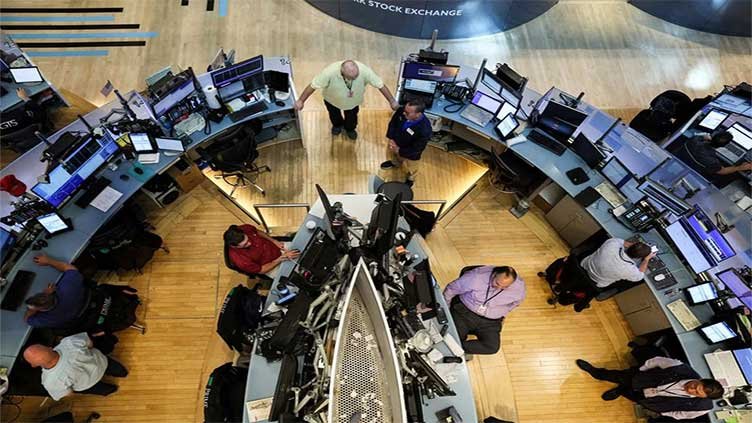By Minahil Khurum
European equities experienced a noteworthy rebound on Monday, following a tumultuous week, while longer-term U.S. Treasury yields surged to their highest point in over a decade. Intriguingly, this all unfolded against the backdrop of oil prices gaining momentum, despite China implementing a less substantial policy shift than anticipated.
The People’s Bank of China opted to reduce its one-year lending rate by a modest 10 basis points, while keeping the five-year rate untouched. This decision caught many analysts off guard, as the prevailing consensus had anticipated more substantial cuts. It’s a puzzling move considering the challenges that have recently beset the world’s second-largest economy, including a deteriorating property market, feeble consumer spending, and a steep decline in credit expansion.
Susannah Streeter, the head of money and markets at Hargreaves Lansdown, aptly described the central bank’s move as a “small injection of stimulus.” However, it appears to have left investors yearning for more substantial measures to address the multifaceted issues afflicting various sectors of the Chinese economy.
One of the underlying factors constraining the magnitude and extent of rate cuts appears to be concern surrounding the yuan’s persistent depreciation. The Chinese currency has depreciated by nearly 6% against the dollar this year. This depreciation, which can undermine the nation’s economic stability, has raised questions about the prudence of implementing more aggressive rate cuts.
The disappointment stemming from China’s policy adjustments reverberated through Asian markets, leading to a decline in share prices. However, Europe took a different trajectory on Monday, with stock prices exhibiting resilience and U.S. stock futures hinting at a forthcoming recovery.
In particular, Europe’s STOXX 600 index demonstrated a noteworthy resurgence, gaining 0.7% by 1207 GMT. This marked a positive turnaround following a 2.3% dip during the previous week. Notably, energy companies outperformed the broader market, partly due to the uptick in oil prices. Oil prices, which had experienced a seven-week winning streak, took a brief hiatus last week amid concerns regarding Chinese demand. However, they quickly regained momentum, with Brent crude reaching $85.74 per barrel, while U.S. crude settled at $82.37.
Meanwhile, the bond market exhibited a selloff that catapulted government borrowing costs to their highest levels in more than a decade. In particular, longer-term U.S. Treasury yields saw an increase of 5-7 basis points, with the 30-year yield reaching an impressive 12-year high of 4.44%. This surge in yields sparked concerns among market participants, who began to contemplate the implications of these developments.
Seema Shah, the chief global strategist at Principal Global Investors, noted, “People are starting to get worried about the (bond) selloff and are looking ahead to Federal Reserve Chair Jerome Powell and what he says later this week about peak rates.” This anticipation underscores the unease surrounding the current trajectory of bond markets and the potential implications for future monetary policy decisions.
The week’s focal point resides in the U.S. Federal Reserve’s Jackson Hole conference, an event anticipated to feature Federal Reserve Chair Jerome Powell’s reflections on the surge in yields and the recent string of robust economic data. In the backdrop of this conference, the Atlanta Fed’s GDP Now tracker paints an impressive picture, indicating a robust 5.8% growth rate for this quarter.

Check out our monthly English and Urdu magazines on Homepage
Surveying the landscape, it’s evident that a significant portion of analysts believes the Federal Reserve has concluded its rate-hiking spree. In contrast, traders are venturing into a different terrain, with a 40% chance wagered on one final rate hike occurring by November.
The U.S. dollar, which has basked in the glow of five consecutive weeks of gains fueled by ascending bond yields, experienced a minor setback on Monday, retreating by 0.2% against a basket of its global peers. This retracement came just shy of the two-month peaks achieved on the preceding Friday.
Meanwhile, the euro exhibited a resilient demeanor, posting a 0.3% gain against the dollar. This rebound followed a 0.7% dip last week.
Conversely, the ascent of the U.S. dollar and the surge in bond yields had a bearing on gold, which currently resides at $1,894 per ounce. This marks a notable descent for the precious metal, as it grazed a five-month nadir during the prior week.
Shifting our focus to the energy realm, liquefied natural gas (LNG) prices bore the brunt of uncertainty surrounding potential strikes at Australian offshore facilities. Such a disruption could reverberate through global supply chains, affecting nearly 10% of the world’s supply.
In the European energy arena, the benchmark TTF front-month wholesale gas contract embarked on a spirited ascent, reaching levels as high as 41 euros per megawatt hour during early trading. This ascent mirrors August’s peak of 43 euros, indicative of a 42% upswing for the month. The underlying cause of this meteoric rise is the uncertainty coursing through the global energy market.
In the realm of corporate earnings, the spotlight fell upon Dutch payments processor Adyen. The company’s shares experienced a plunge of up to 7%, marking a significant decline. This retreat comes on the heels of Thursday’s lackluster earnings report, which cast shadows over the company’s valuation and raised concerns among investors.
The upcoming corporate earnings report from Nvidia, a darling of the artificial intelligence sector, looms on the horizon for Wednesday. This report will serve as a litmus test, scrutinizing the valuations attached to tech companies amidst an ever-evolving landscape.
In conclusion, the global financial landscape is marked by uncertainty, driven by factors like the upcoming U.S. Federal Reserve’s Jackson Hole conference, rising bond yields, and fluctuating currencies and commodities. Earnings reports from major companies add to the complexity. As markets remain dynamic, vigilance and adaptability are essential for investors and decision-makers in these unpredictable times.
Subscribe our website for latest updates:
https://republicpolicy.com/shop/
Read More















